As part of the celebration of the 70th anniversary of Topps baseball cards, we've asked fans (as well as our staff) to submit their all-time favorite baseball cards, and we've broken them down by team. We'll be revealing submissions regularly throughout the season, ranging from the famous to the weird, and everything in between.
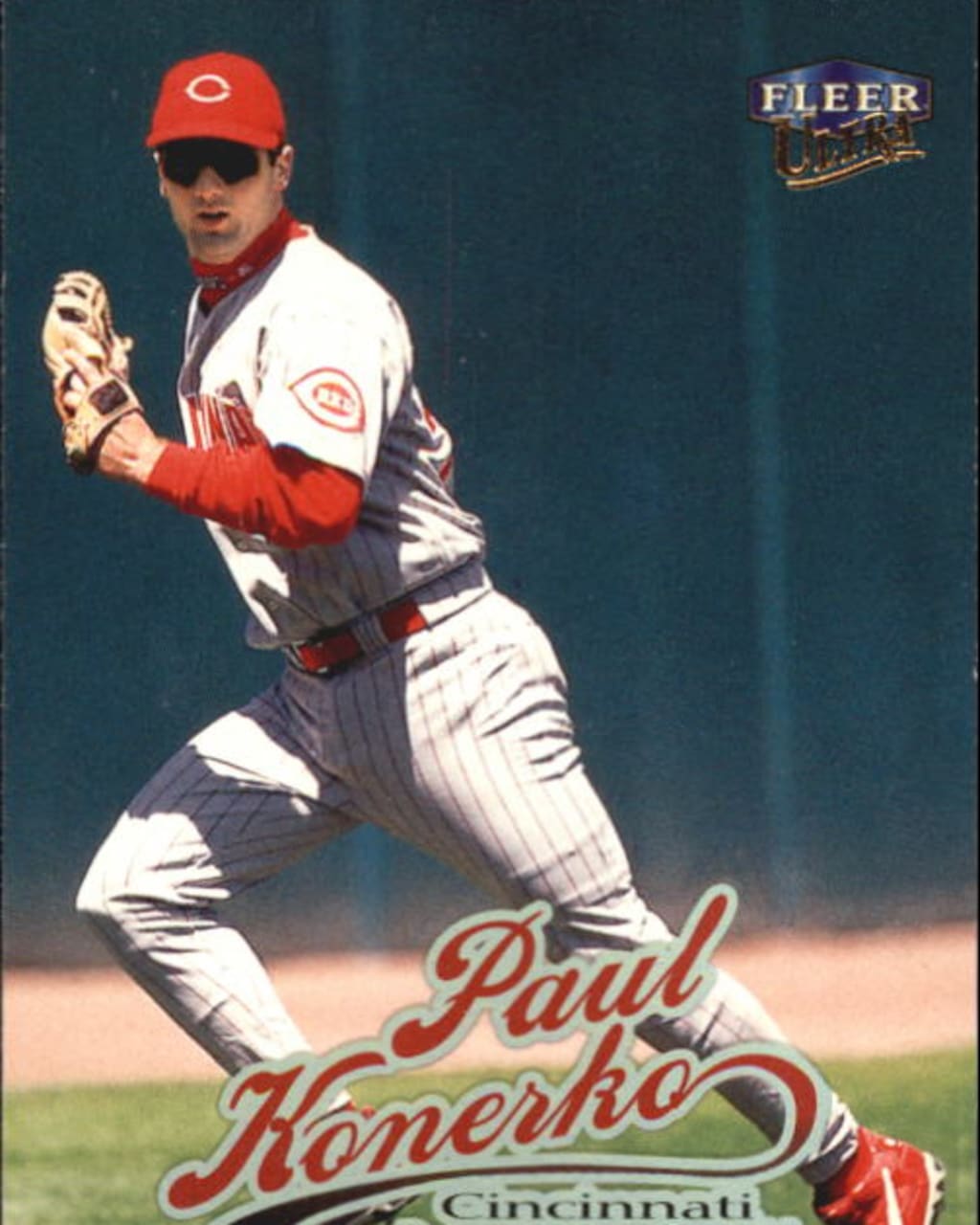
Paul Konerko, 1999 Fleer Ultra
Konerko on the Reds? It’s true -- the future White Sox great was originally drafted by the Dodgers 13th overall in 1994, and Los Angeles traded him to Cincinnati on the fourth of July in 1998. The first baseman spent all of 26 games with the Reds before being dealt to Chicago.
With the White Sox, Konerko went on to become a six-time All-Star, the MVP of the 2005 American League Championship Series, and a World Series champ that year, helping the Sox win their first World Series title in 88 years.
Few remember that very brief stop with the Reds, but it did happen, giving us cards like this gem. -- Manny Randhawa
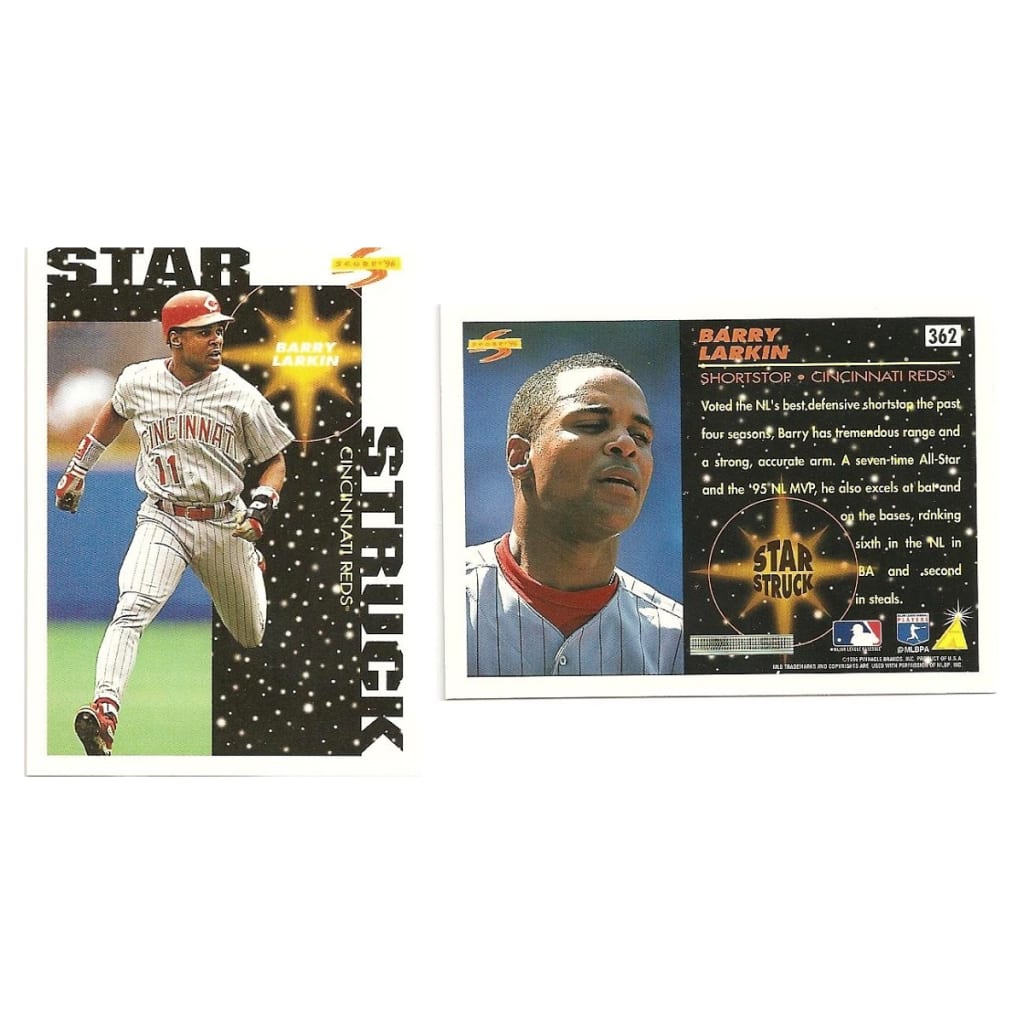
'90s throwback: Barry Larkin, 1996 Score Star Struck
An insert series straight out of the '90s, the Score Star Struck cards have a literal cosmic design, with a supernova flare around the player's name and twinkling stars in the background.
This card of Larkin was made right after his MVP season in 1995, when the Reds star batted .319 with 15 home runs and 51 stolen bases and won a Gold Glove at shortstop.
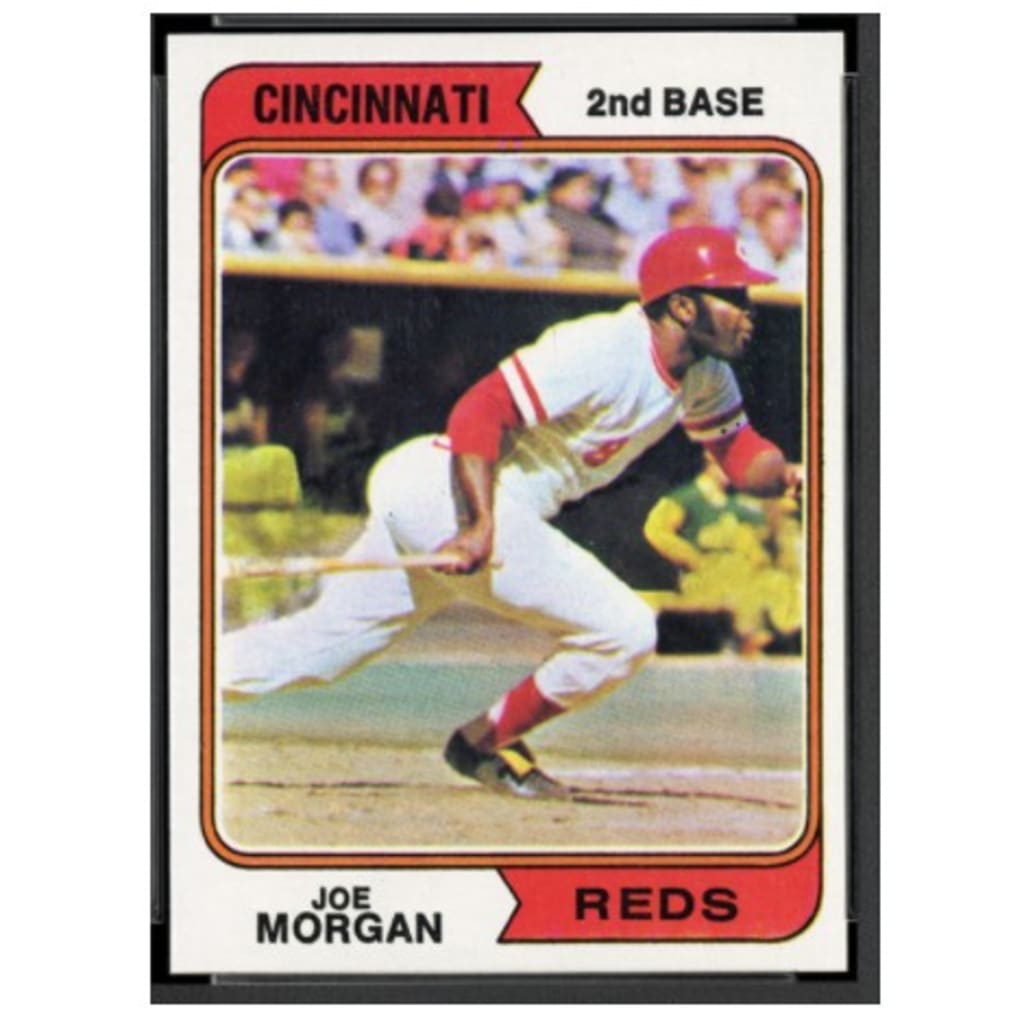
Joe Morgan, 1974 Topps
This card, which was submitted by Don Brodeur, includes a great action shot of Joe Morgan's one-handed follow-through on a swing after making contact. The second baseman is getting ready to bust it out of the batter’s box, his mutton-chop sideburns clearly visible.
The ‘74 Topps set had a clean design with a white border and two ribbon-tail banners that presented the city and team names above and below the photo. Morgan is one of a number of Hall of Famers included in the set.
Morgan went on to earn his fifth All-Star selection in ‘74, one year before he won the first of back-to-back National League MVP Awards.
-- Thomas Harrigan
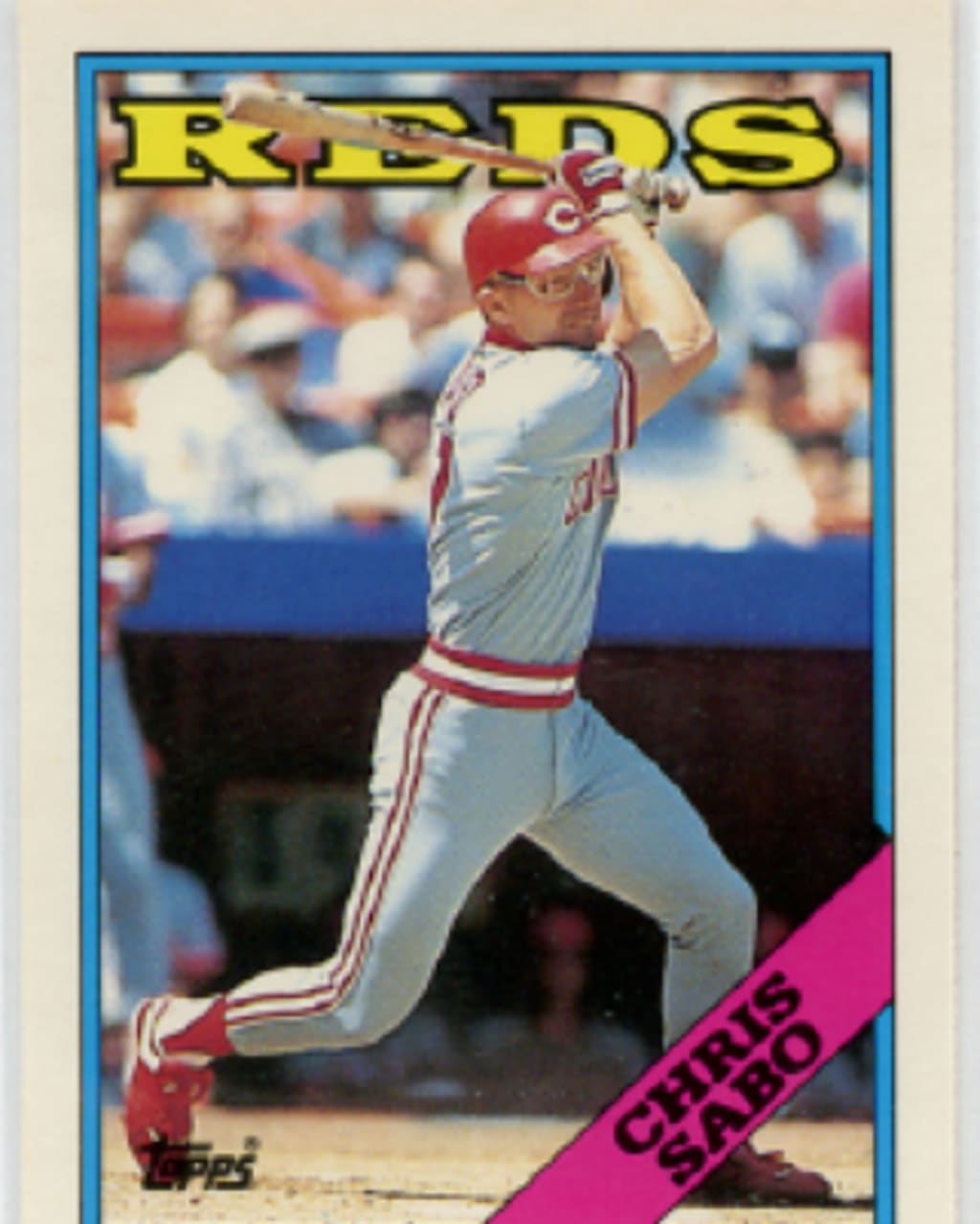
Chris Sabo, 1988 Topps
There are few players in baseball who have such a unique look that you could tell who they were no matter what uniform or number they were wearing.
Chris Sabo is one of those guys. The goggles became a signature part of the Sabo experience, which included helping the Reds go wire to wire in first place en route to a shocking four-game sweep of the A’s in the 1990 World Series. The third baseman was also the 1988 National League Rookie of the Year and a three-time All-Star.
“When Chris Sabo came up to the Reds, my friends and I were enamored,” wrote Jeff. R. of Indianapolis. “The hustle. The goggles. His nickname was ‘Spuds’ but we called him ‘The Sabe.’ Later, after buying the Topps Traded set to get Sabo (and the USA team), we met him at a card show to get an autograph. I asked him if anyone ever called him ‘The Sabe,’ and he said, ‘No, but my mom used to call me her ‘Saby.’ Great memory!”
Absolutely tremendous. -- Manny Randhawa
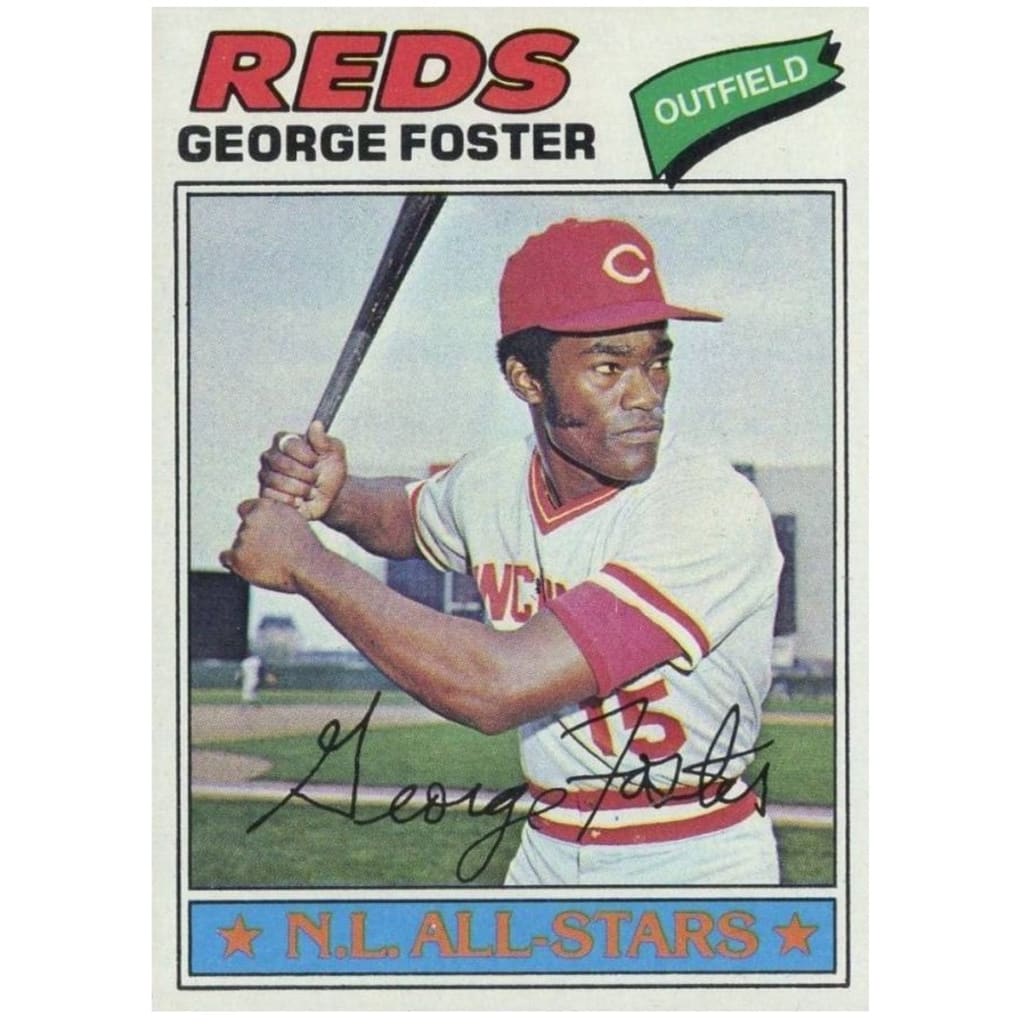
Best Reds facial hair card: George Foster, 1977 Topps
Sideburns were a popular style choice among MLB players in the ‘70s, but George Foster still managed to stand out with his unique look.
Foster added a mustache after joining the Mets later in his career, but his sideburns were plenty impressive on their own. Case in point: his '77 Topps card.
Foster looks especially menacing with the bat in his hands, and his L-shaped sideburns give him an extra edge.
As evidenced by the “N.L. All-Stars” banner on the bottom of the card, Foster was coming off his first All-Star season in ‘76. He would take his game to an even higher level in ‘77, hitting .320 with a Major League-leading 52 homers and 149 RBIs and winning the NL MVP Award. From '66-89, Foster was the only big leaguer to have a 50-homer season.
-- Thomas Harrigan
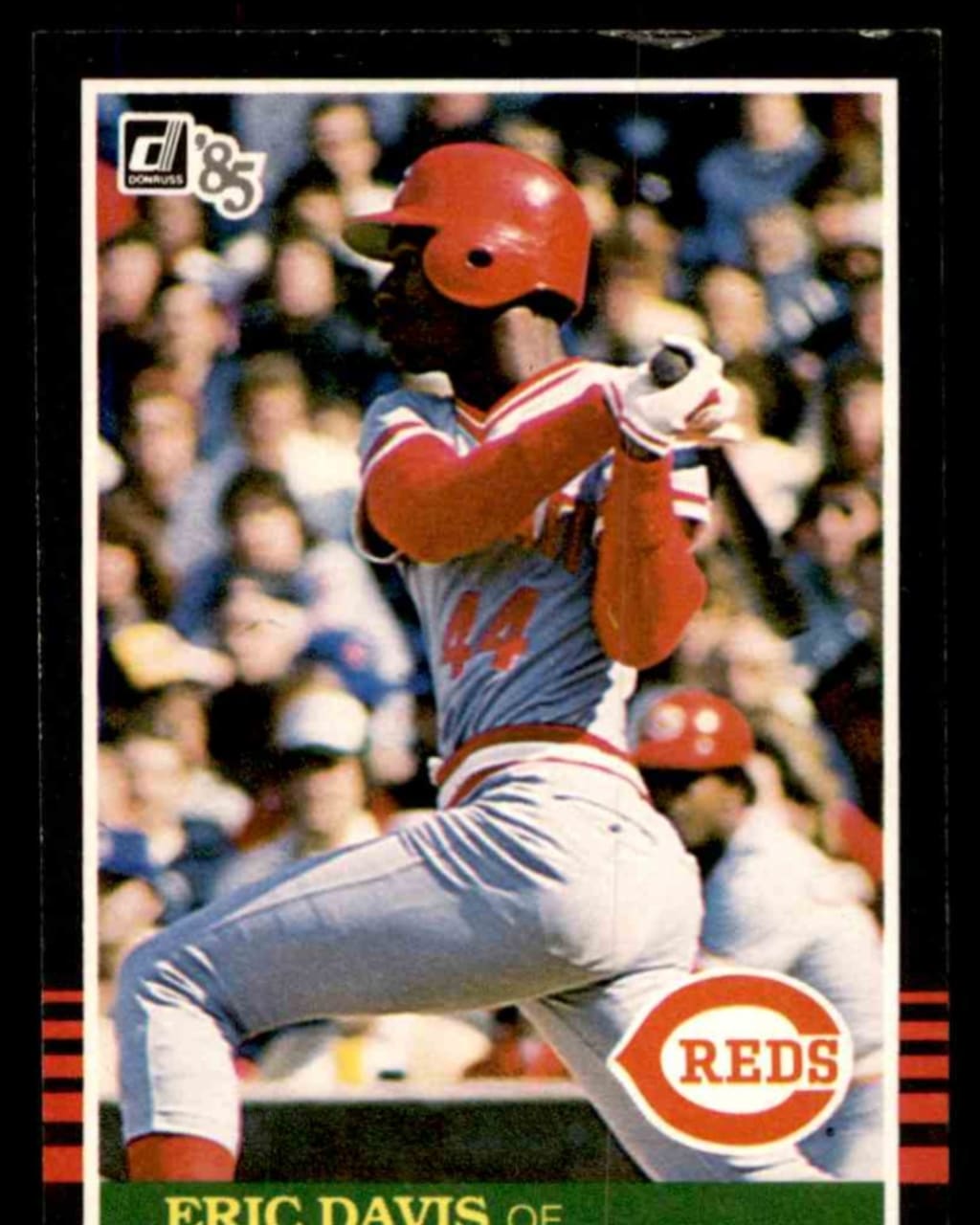
Reds: Eric Davis, 1985 Donruss
Eric Davis is one of the all-time “what if” players in baseball history. He was the quintessential five-tool player, with a combination of speed and power that few in the game’s history have ever possessed. At his peak from 1986-87, Davis averaged 32 home runs and 65 steals, despite playing in no more than 132 games in either of those seasons.
But that would be Davis’ biggest obstacle -- injuries. A series of them cost him much of his Major League career, but he still managed to hit 282 homers and steal 349 bases over 1,626 games. It’s amazing to think of how great a player that he might have been if he was able to stay on the field. With that in mind, we can look at some of his baseball cards from early in his career wistfully, being reminded of his unbelievable talent.
That’s what we get with this Davis rookie card, submitted by Andy G. of Findlay, Ohio. A young Davis, in those classic pullover Reds road uniforms with the oversized lettering, having just put the ball in play and about to burst out of the batter’s box. At this early stage of the outfielder’s career, he was already being compared to Willie Mays.
That’s an unfair comparison for anyone just coming up to the big leagues, but you can’t blame Reds fans for having it cross their minds back in 1985. -- Manny Randhawa
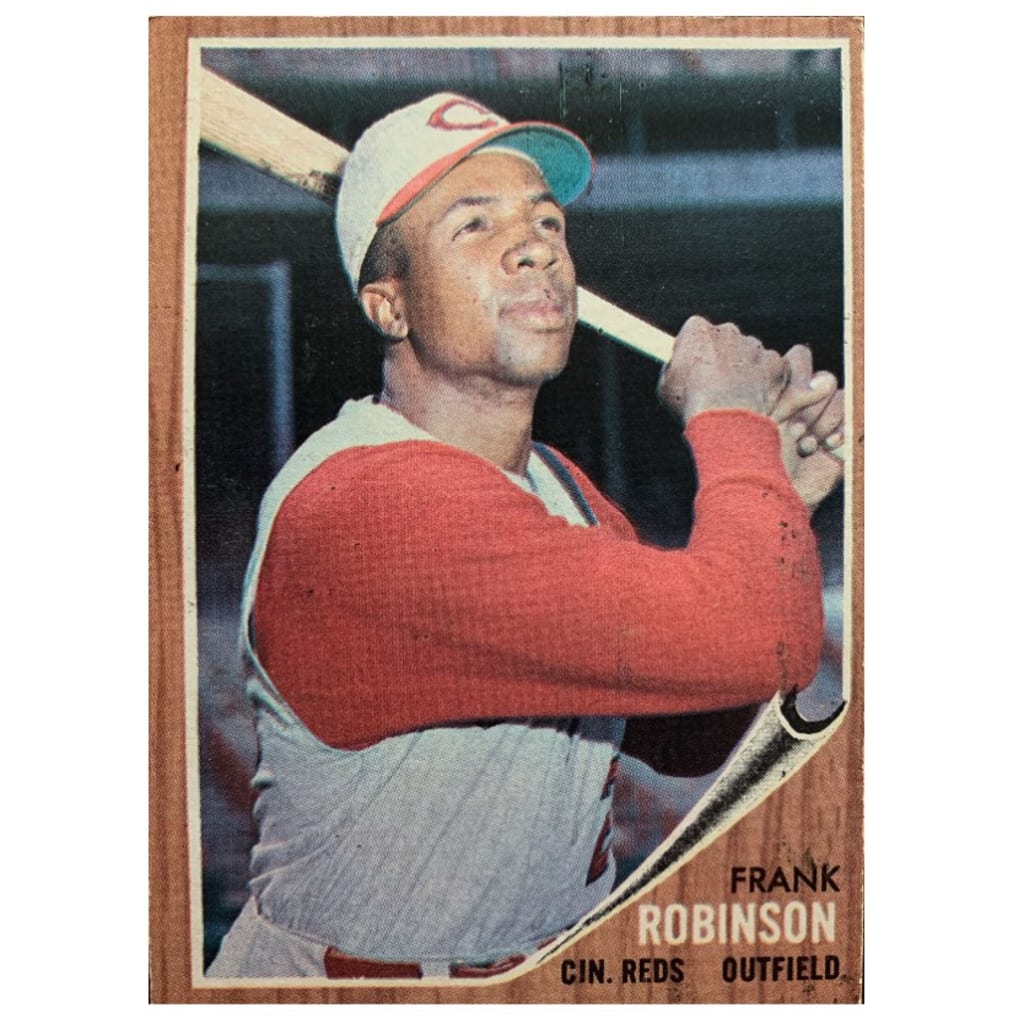
Frank Robinson, 1962 Topps
This one was submitted by Terry Griffith of Dayton, Ohio. Griffith wrote:
“Growing up as a Reds fan in the late 1950s & early 1960s, Frank Robinson was THE player to watch and always was my favorite player. Following his MVP season, he put up even better offensive numbers in 1962. One of the greatest players of all time and still my favorite player of all time.”
Recognizable by its woodgrain borders, the ‘62 Topps set is big on star power, with Robinson, Mickey Mantle, Willie Mays, Hank Aaron, Sandy Koufax, Roberto Clemente and Roger Maris -- fresh off his 61-homer season -- all part of it. It also features rookie cards for future Hall of Famers Lou Brock and Gaylord Perry.
Robinson won the NL MVP Award for the Reds in ‘61, then improved upon his stats in most major categories the following year, as Griffith notes.
His ‘62 Topps card depicts the right-handed slugger completing a swing and gazing into the distance, as if he just hit a titanic blast. He had a lot of practice perfecting that look over the years, with 586 career home runs. -- Thomas Harrigan
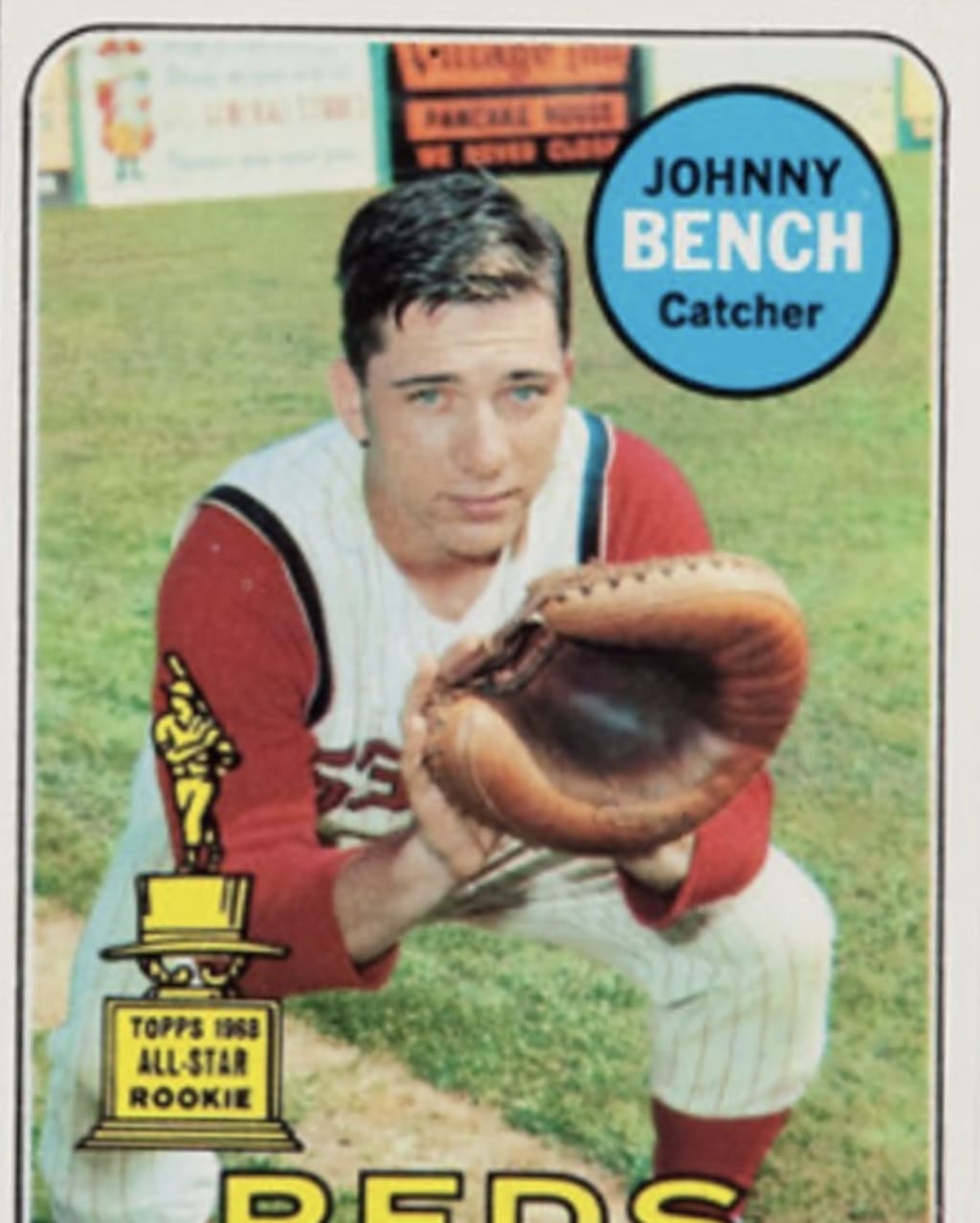
Iconic Reds card: Johnny Bench, 1969 Topps
This is a beautiful card. There is so much to love -- a young Bench posing in the catcher's squat, Crosley Field with the advertisements on the outfield walls, Bench right along the left-field line, and how about that uniform? It's no wonder this is a favorite of so many, including Don from Iberia, Ohio, Alex G. from New York City and Seth from Cincinnati.
Considered by many to be the greatest catcher in baseball history, as well as a huge cog for the "Big Red Machine" Reds, who won back-to-back World Series titles in 1975 and '76, the '69 Topps card captures Bench at 20 years old, just before he won the '68 National League Rookie of the Year Award.
"Bench was like a superhero behind the plate growing up, incomparable, and that card of him so young yet so good, a rising star coming out of the '60s kind of encapsulates a time for me," wrote Alex.
Seth has a great memory of this card being his favorite in a collection in his father's office while he was growing up.
"In the bottom right drawer [of the desk] there were about nine sheets of baseball cards he was able to save from his own childhood," Seth wrote. "There were plenty of treasured cards in there that hadn’t suffered their demise in the spokes of a bike, but this was the only one I cared about. I imagine I went into that office about once a week for a decade to look at this card. It’s tattered and worn, exactly like an old catcher’s mitt, but it’s Johnny Bench, and it’s amazing."
Bench, of course, needs no introduction. The Hall of Famer spent 17 seasons behind the plate for Cincinnati, winning the NL MVP Award in both 1970 and '72. He was also a 10-time Gold Glove Award winner, a 14-time All-Star and the MVP of the 1976 World Series against the Yankees.
Bench had it all when it came to slugging and catching, just like this 1969 Topps card of his has it all when it comes to aesthetics.

Barry Larkin / Albert Belle, 1997 Topps Finest Inter-League Matchups
This is the type of cool card that proliferated in the '90s. On one side is Larkin, the Reds' star shortstop. On the other is Belle, the Indians' fearsome slugger.
Larkin had recently won the 1995 NL MVP Award, the same season that Belle led the AL (and the Majors) with 50 home runs.
The card was submitted by fan Dustin McHugh.

Ken Griffey Jr., 2004 Topps
Thanks to Matthew Houk of Columbus, Ohio, for submitting this beautiful card showing Griffey robbing a ball at the wall.
“Ken Griffey Jr. is my favorite baseball player of all time,” Houk wrote. “I loved watching him and the Reds as a kid and I saw him hit his 599th home run at [Great American Ball Park]. This card is from the 2004 Topps set, which is the year from which I have a majority of my cards. My brother and I collected a lot that year since the card shop was right across from where we had swim lessons in the summer.”
Griffey was 34 years old in 2004, and coming off back-to-back seasons in which he played fewer than 75 games, but this card was a reminder that the future Hall of Famer still had some magic left in him. Griffey made the All-Star team in 2004 and went deep 35 times the following season while posting a .946 OPS, his highest in any year with the Reds. -- Thomas Harrigan
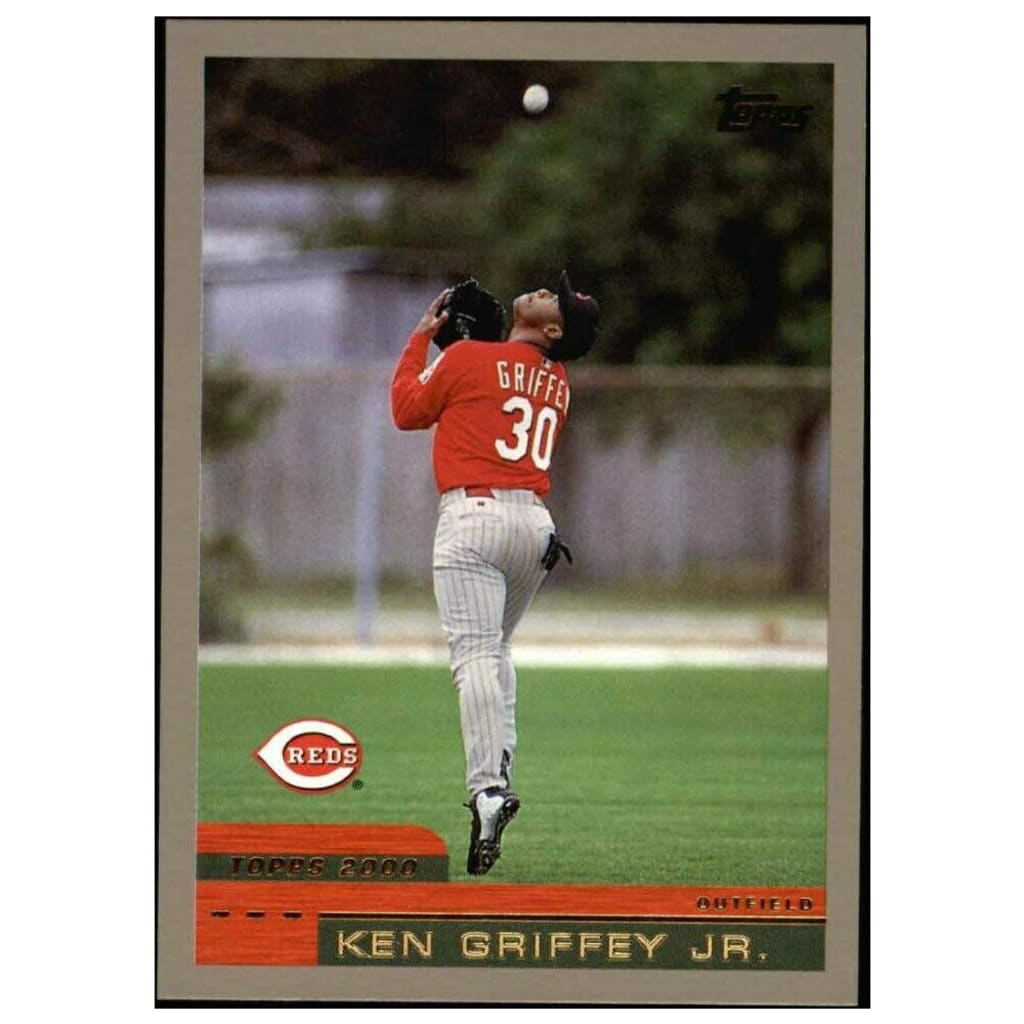
Ken Griffey Jr., 2000 Topps
Not only is this a really cool photo of Griffey making an over-the-shoulder basket catch, it's also one of the first cards showing him in a Reds uniform.
The 2000 season marked Junior's debut in Cincinnati after 11 superstar seasons in Seattle, as the Reds got him in a blockbuster trade with the Mariners that February. Griffey would go on to slug 40 home runs for a fifth consecutive season in his first year with the Reds.
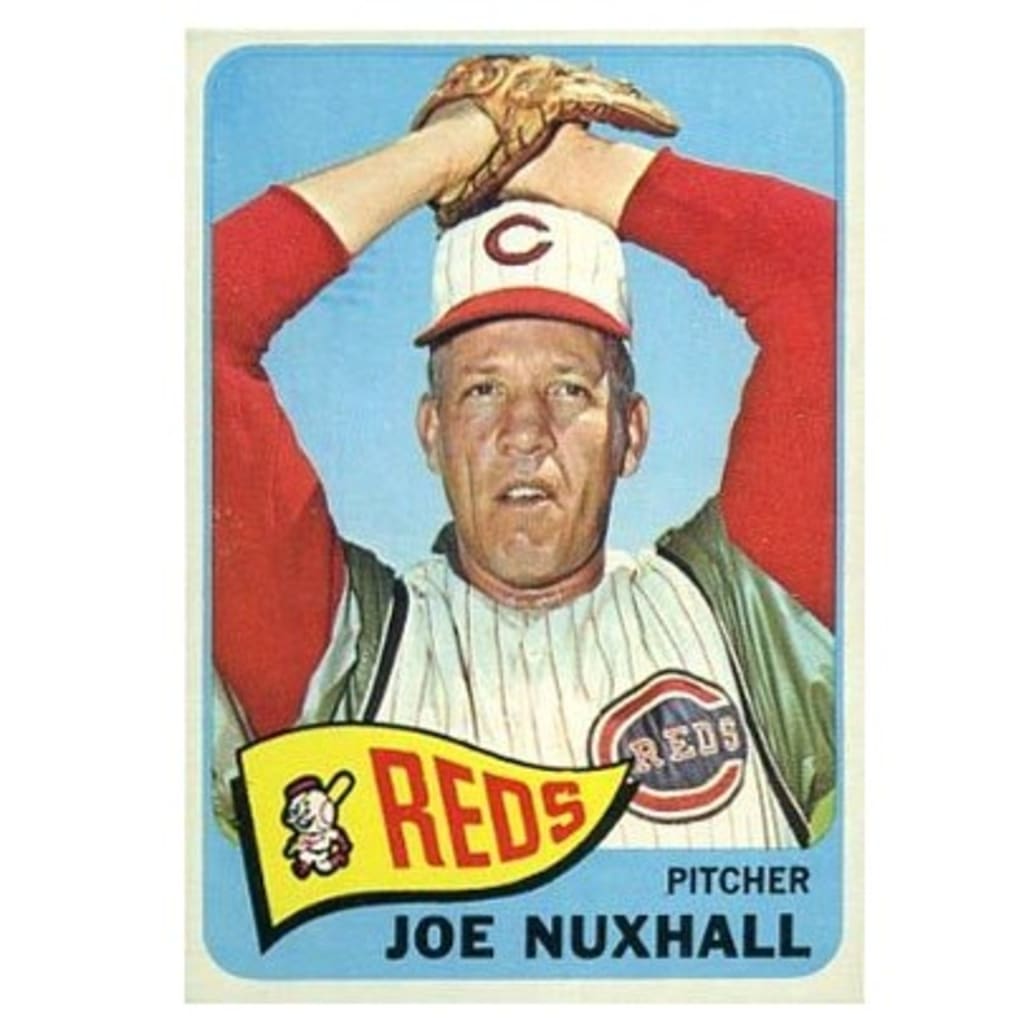
Joe Nuxhall, 1965 Topps
Nuxhall is best known for being the youngest player ever to appear in an AL/NL game, as he was 15 years and 316 days old when he was called upon in 1944 amid player shortages due to World War II.
Nearly a decade later, in 1952, Nuxhall made it back to the big leagues with Cincinnati and went on to have a lengthy career.
For a young Stuart Watson of Falls Church, Va. (now residing in Australia), learning about Nuxhall provided the hope that a big league career wasn’t far off.
“When I was 5 years old I acquired this card," Stuart wrote in response to our survey. "Joe Nuxhall meant nothing to me as I was a Washington Senators fan. When I turned over the card and read the back, it said that Joe was the youngest player in MLB history. At that age, I knew nothing of wartime baseball and that teams grabbed every able arm they could to get through those ‘star-less’ years.
"I was completely besotted by baseball and in my 8-year-old mind, I truly believed that I was only 8 years away from playing in the Majors -- the fact that Joe was also a lefty confirmed that thought in my mind. The Reds suddenly became my favorite NL team and Joe became my favorite player.”
This card Watson submitted is from Nuxhall’s second-to-last year in the Majors. The southpaw returned to the Reds in 1962 after brief stints with the Royals and Angels, and finished his career in the Queen City. -- Thomas Harrigan
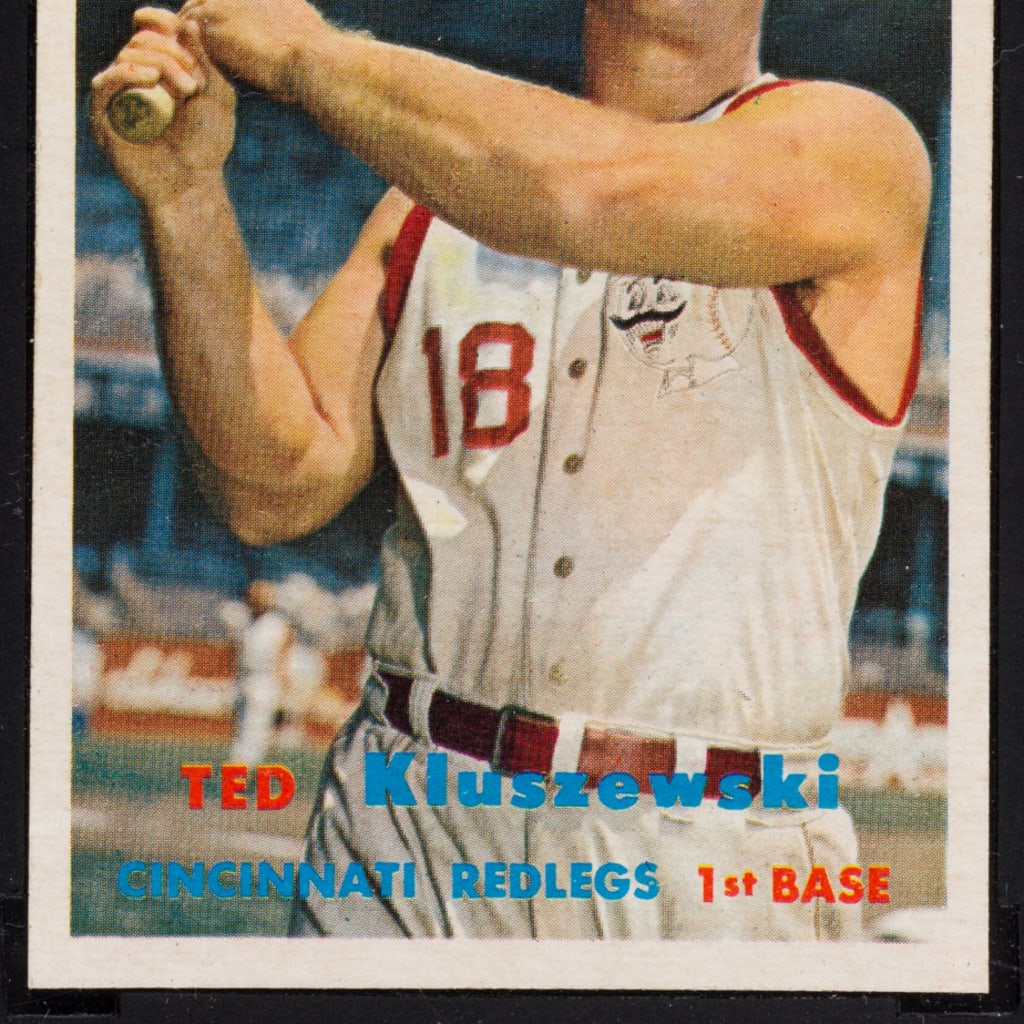
Ted Kluszewski, 1957 Topps
As you can see, you wouldn’t want to be in a contest comparing biceps with Kluszewski, who is famous for the enormous arms that he used to slug 171 homers for the Reds from 1953-56. The four-time All-Star finished runner-up in NL MVP Award voting in ’54, when he led the Majors in home runs (49) and RBIs (141).
Richard S. of Los Angeles submitted this gem, and had a question to go along with the submission.
“The 1957 Topps Ted Kluszewski is pretty special,” he wrote. “Did they really wear uniforms like this?”
They sure did, Richard. And they were amazing. -- Manny Randhawa
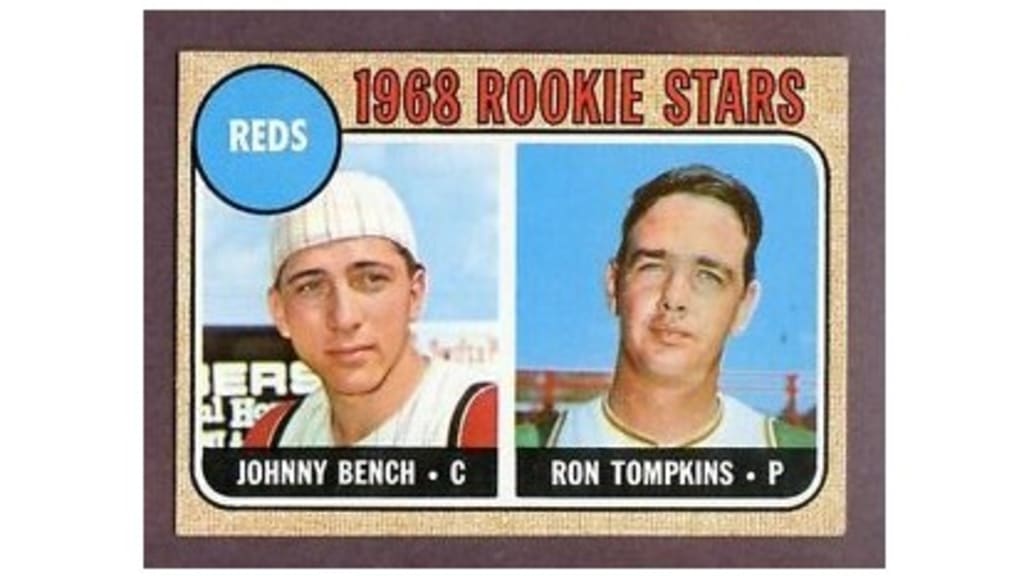
Johnny Bench and Ron Tompkins, 1968 Topps
“This Johnny Bench rookie card holds a couple of memories for me -- one fond and another of disbelief,” Jim Swenson of Dubuque, Iowa, wrote in his submission.
Turns out, Swenson made a decision as a kid that caused his older self to face-palm years later.
“When I first found it in a pack of baseball cards at age 11, it didn't mean a whole lot to me. Then, a year later, when Bench became a star, I took a pen and put an ‘X’ on his side so that I knew that he -- not Tompkins -- was the good one. A few decades later, as I was going through my many great cards from that era and saw how much some of them were worth, I couldn't believe that my Bench rookie card was basically worthless as X still marked the spot.”
Swenson may not be able to sell this for anything, but it’s still a cool card to have, as it marks Bench’s first Topps appearance. -- Thomas Harrigan
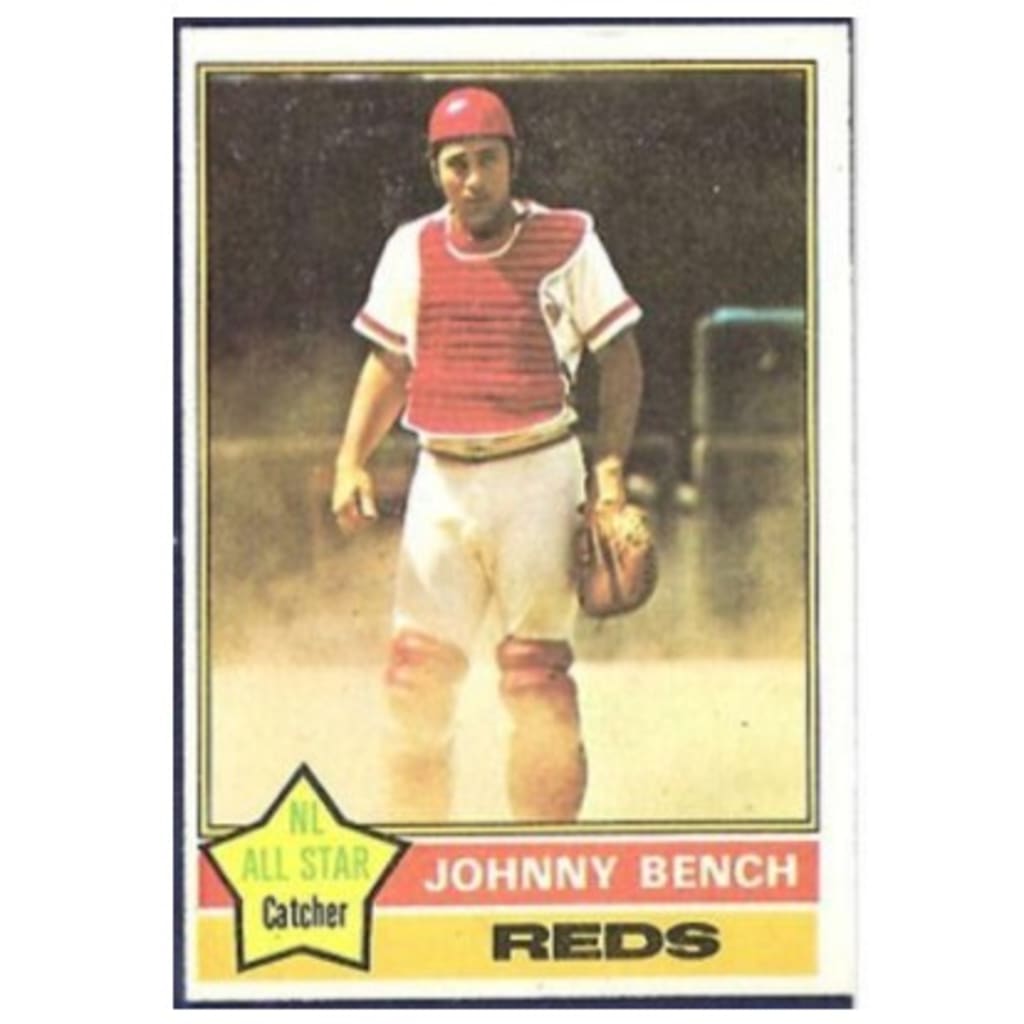
Johnny Bench, 1976 Topps
Of all the different Johnny Bench cards that were mentioned in our survey (and there were a lot), this one was the most popular.
It’s not difficult to see why just by looking at it, but let’s hear from the fans who submitted it.
Rob Flowers of Mishawaka, Ind.: “It's the card that made me love baseball. I was 7, and JB became my favorite player for life. Such a cool action card. The dust, the gear, the look.”
Greg Cleveland of Eau Claire, Wis.: “Made 11-year old me want to be a catcher? Check. All-Star? Check. Big Red Machine? (even though I was a Cardinals fan) Check. Card No. 300? (All the big stars were numbered in the hundreds.) Check. Dust rising around him after a play at the plate? Double check. Carried it with all my best cards in my pocket securely held together by a rubber band -- like every kid in the '70s did. Sure, a pretty one would be nice, but I didn’t grow up with it like this one.”
Jeff Kurowski of Green Bay, Wis.: “He is the greatest catcher of all time, but this card is also my favorite because Bench is wearing gear that I wanted so much at that time as a Little League player. The photo shows Johnny in his red gear with dust around him. I played for a team that wore classic old-school gray uniforms with red trim. All the catching gear in our league during that era was the orange and black models. I love the photo and pictured myself in the red shins, chest protector and helmet, along with his red mask, which is not pictured.”
Jeff Mulvey: “Greatest baseball card of all time -- very simply captures the power and toughness of one of the game's greatest players. Gave me chills when I found it in a pack back in 1976, and it gives me chills now looking at it.” -- Thomas Harrigan

Pete Rose, 1976 Topps
Pete Rose was as intense a player as they come. Legend has it that Mickey Mantle actually gave Rose his nickname of “Charlie Hustle” after Rose made an overzealous attempt at climbing the fence to reach a Mantle home run, one that was beyond the fence by plenty.
Charlie Hustle owns the MLB record for hits with 4,256. He played for the “Big Red Machine” Reds of the mid-1970s, helping Cincinnati win back-to-back World Series titles in 1975 and ’76. This card, submitted by Mark G., captures perfectly Rose’s intensity, with a close-up of his face.
And not just that, but he’s got the flip-down glasses on, enhancing the laser-focus look. It appears Rose is leaning against the batting cage, which would be an apt place for the setting of this card, since Rose is one of the greatest hitters in the game’s history and made an obsession of his craft.
-- Manny Randhawa

